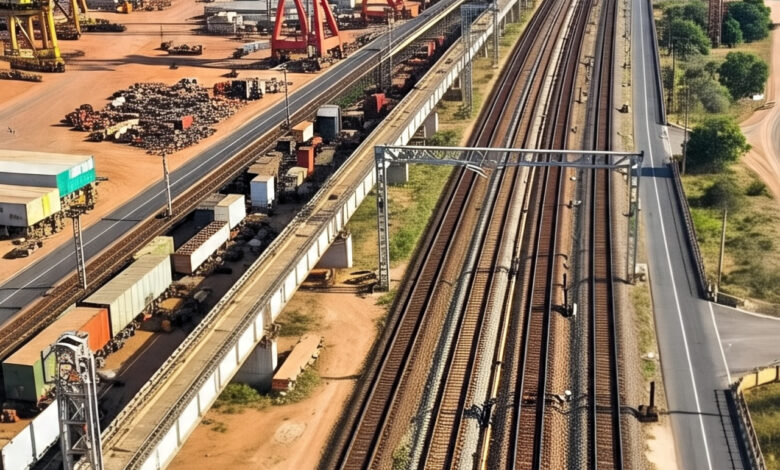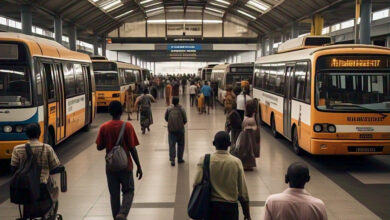Transportation Infrastructure in Zimbabwe: Catalyst for Economic Development

In today’s dynamic economy, transportation infrastructure in Zimbabwe stands out as a critical engine of growth. The nation’s progress relies on robust systems that connect rural communities to urban markets, stimulate trade and bolster investor confidence. Moreover, modern transport networks foster regional integration while reducing travel times and operational costs.
Furthermore, as industries evolve, reliable mobility becomes indispensable for economic competitiveness. In addition, policymakers and investors should increasingly targeting this sector because improved connectivity invariably leads to efficiency gains and job creation. Clearly, as the country embarks on infrastructural reforms, the positive spillover effects on commerce and community life are inevitable.
Rail Networks: Zimbabwe Transport Networks Driving Efficiency
Rail transport plays a huge part in economic mobilisation in Zimbabwe’s import and export. Over the past few years, government owned NRZ and private owned BBR have showcased connectivity reduces delays and curtails shipment costs. For example, many mining and agricultural players benefit from efficient trains that shuttle raw materials.
Moreover, international institutions such as the World Bank and the African Development Bank support initiatives that modernise the rail segment. Furthermore, enhancements by the NRZ have led to fewer bottlenecks and higher freight volumes.
This evolution since independence in rail systems demonstrates how Transportation Infrastructure in Zimbabwe can drive efficiency and foster market competitiveness. Additionally, reliable rail networks empower local businesses to expand their supply chains, thereby fortifying the nation’s trade links.
However, there is much more that needs to be done in the nation’s railway network system.
Ports and Global Trade: Zimbabwe Transit Infrastructure Enabling Trade
Modern port facilities have revolutionised Zimbabwe’s role in global trade. The integration of digital cargo management systems has streamlined customs processes, which in turn reduces delays and freight costs. Indeed, contemporary ports now serve as gateway hubs that attract foreign direct investments.
In addition, secure storage and handling areas have improved export readiness, which boosts market confidence. Experts note that increased efficiency and transparency in ports further enhance the reputation of Zimbabwe as a trading nexus.
Moreover, modern port upgrades illustrate the impact of transportation infrastructure in Zimbabwe on global trade. Consequently, the emphasis on upgrading port facilities signifies a deliberate move toward a resilient and future-proof transit system that strengthens cross-border commerce.
Bridges and Tunnels: Enhancing Connectivity through Zimbabwe Transportation Systems
Bridges and tunnels have emerged as key enablers in connecting previously isolated regions. New engineering projects have significantly reduced travel distances and improved safety on major routes. Furthermore, innovative design techniques now allow for quicker construction times and longer-lasting structures.
Also, these infrastructural projects foster economic inclusion by linking rural communities with urban economic centres. In addition, effective bridges and tunnels facilitate smoother movement of goods and services, thereby reducing logistical costs.
Therefore, such advances underscore the value of transportation infrastructure in Zimbabwe in promoting connectivity and inviting more robust economic activity. Additionally, by easing the flow of traffic, these projects contribute to less congested urban centres and improved emergency response times.
Logistics and Freight Facilities: Streamlining the Zimbabwe Logistical Framework
Substantial investments in modern logistics and freight facilities have been indispensable for ensuring smooth operations in the transport sector in other countries. State-of-the-art warehouses and distribution centres now form the cornerstone of an integrated freight network.
In turn, these enhancements allow for faster turnaround times and reduced product spoilage in perishable markets. Moreover, the combination of road, rail, and air solutions has created an agile logistical framework that supports both local and international supply chains.
As a result, businesses can now maintain leaner inventories while meeting market demand swiftly. Cutting-edge logistics facilities can demonstrate the transformative power of transportation infrastructure in Zimbabwe for modern freight and supply chain management.
Furthermore, improved freight hubs encourage private sector investments and stimulate innovation in distribution practices.
Smart Transport and Traffic Management Systems: Advancing Smart Mobility in Zimbabwe
The advent of smart technology has revolutionised urban mobility through better traffic management and real-time data analytics. Also, sophisticated systems now adjust traffic signals dynamically, thereby easing congestion and reducing commute times.
Additionally, mobile applications and sensors collect essential data that aid government agencies in making informed decisions about road maintenance and expansion. Consequently, urban centres experience fewer delays which directly benefits business productivity.
Indeed, such data-driven solutions reposition traditional transport systems into smart mobility platforms, highlighting the transformative potential of digital tools. Consequently, advanced smart systems can exemplify the promise of transportation infrastructure in Zimbabwe for integrating technology and efficiency.
Moreover, these innovations provide replicable models for other nations striving for sustainable urban growth.
Future Outlook and Investment Opportunities: Driving Infrastructure-Driven Growth in Zimbabwe
Looking ahead, continuous innovation and keen investments are shaping the transportation landscape. New projects that leverage digital technologies, public-private partnerships and sustainable construction practices are being rolled out across the nation.
In addition, regulatory reforms pave the way for more significant private sector involvement, which promises to unlock further economic potential. Furthermore, these strategic initiatives create an ecosystem wherein every logistic component interconnects seamlessly, thereby spurring broader economic activity.
Notably, the expansion of transit corridors and the adoption of green technologies further accentuate the positive trajectory of the sector. Hence, dedicated efforts toward transportation infrastructure in Zimbabwe will undoubtedly unlock significant economic potential.
As a result, the nation will witness long-term, infrastructure-driven growth that benefits all stakeholders if all this is implemented efficiently.
Conclusion
Robust transportation systems lie at the heart of Zimbabwe’s economic prosperity. Improved rail networks, upgraded ports, effective bridges and tunnels, modern logistics hubs and smart traffic management systems collectively drive progress and integration within a country.
Every initiative reinforces the central role of connectivity in boosting competitiveness and reducing overheads. Therefore, Zimbabwe can benefit from such investments and collected efforts to achieve this.
In summary, meticulous and forward-thinking investments in transportation not only promote trade and mobility but also lay the groundwork for sustainable development. By fortifying and innovating within this critical sector, Zimbabwe can carve out a future where connected communities serve as the bedrock of economic success.





